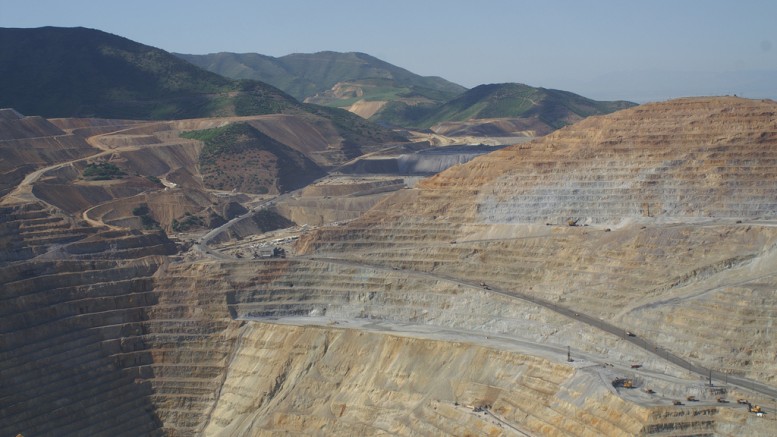VANCOUVER — When a wall failure sent 150 million tonnes of rock and earth pouring into the massive pit at the Bingham Canyon mine in Utah in April, owner Rio Tinto (NYSE: RIO; LSE: RIO) said the event would reduce its copper output for the year by 125,000 tonnes, cutting almost 20% from the miner’s second-largest profit provider after iron ore.
Three months later, things are looking up at Bingham Canyon, which is the largest man-made excavation on earth. In its second-quarter results Rio said the initial recovery plan at the mine, which involves mining from lower sections of the pit and running down stockpiles while the pit is repaired, has “advanced faster than previously expected.” As a result, Bingham’s output is expected to be down 100,000 tonnes for the year, not 125,000 tonnes.
No injuries were sustained in the pit-wall collapse, though the single mine-access ramp in the area was damaged and remains unusable, and $100-million worth of heavy equipment was also damaged. Rio says it will record a non-cash charge related to the event at year-end.
In other copper news, Rio reached a milestone in Mongolia in the second quarter when the Oyu Tolgoi copper-gold mine made its first copper concentrate shipment to China. The company says the shipment represented the “culmination of a three-year, $6.2-billion project to build the first phase of one of the world’s top-five copper mines.”
Improving grades in another part of Bingham Canyon and at the Escondida copper mine in Chile, in which Rio has a 30% stake, are also helping Rio offset the slide’s impact on overall copper production.
Its copper production may be down for the year, but Rio’s iron ore output is on the rise. The company confirmed in its quarterly report that expansion is on track for its operations in the Pilbara region of Australia. The expansion will boost Pilbara’s capacity to 290 million tonnes a year.
Rio is considering another expansion to 360 million tonnes per year, which would push Rio past Brazil’s Vale (NYSE: VALE) to become the world’s largest iron ore producer. But after a cool reaction from investors to that $5-billion proposal, Rio is considering options for mine capacity growth, “including the potential development of new mines and incremental tonnes from further productivity improvement at existing mines.”
On the cost-cutting front, Rio says it is “well on track to meet its US$750-million targeted reduction in exploration and evaluation spending in 2013, with spending in the first half down by US$483 million over the same period of 2012.”
CEO Sam Walsh has pledged to reduce Rio’s spending commitments by more than $5 billion by the end of 2014 while selling non-core assets in an effort to reduce Rio’s net debt, which has grown to more than $19 billion. The company’s list of non-core assets includes coal, aluminum and copper assets in Australia. It previously included Rio’s diamonds business, but the major recently took those operations off the auction block because it could not secure a high enough price.


Be the first to comment on "Rio repairs Bingham Canyon, ships first Oyu Tolgoi copper, expands Pilbara"